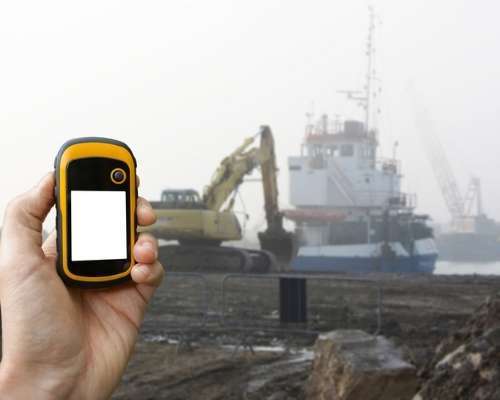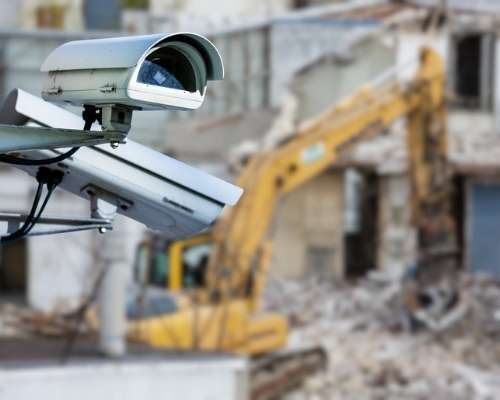4 Tools to Help Prevent Theft at Construction Sites
0%

Construction Site Theft Prevention Has Rarely Been More Critical
Rising prices and continued construction supply chain issues have led to an uptick in the theft of construction materials at job sites. While physical security best practices can help prevent theft, investing in security technology may be a better strategy.
With or without insurance coverage in the picture, theft is worth preventing. Losing essential assets or materials could throw off multiple parties’ schedules and sabotage the timeline or ultimate success of the project. Plus, the reputational damage could linger even after the immediate waste of time and money. How appealing is a business partner who can’t keep their site safe? Other parties need to know builders, contractors and site managers have a schedule and can stick to it. They need to know preventable setbacks like theft won’t waste their time.

4 Construction Equipment Security Devices That Can Help Secure a Job Site
Cameras, tracking devices, alarm systems and delivery scheduling tools are all examples of how construction companies are using new security technology to keep their construction materials safe. Here are four ways you can use these tools to protect your construction site.
1. Material Management and Asset Tracking Solutions
Tracking devices are most often used for construction equipment, but they may also be effective for monitoring stockpiles of essential construction materials.
If a thief makes off with a large amount of materials—like a pallet of lumber, multiple glass panes or container of adhesives—you can use smart GPS tracking to provide their location to authorities. These devices may also be configured to provide alerts when a certain asset or material container moves unexpectedly (or leaves a set geographical area).
More and more, tracking applications and workflows are being built into modern, connected cloud construction management suites. These can also make it easier to keep tabs on different materials as they move around the construction site or track labor, equipment and material usage on jobs. If something is stored in the incorrect location or moved by mistake during construction, tracking devices can make it easier to locate and secure.
Some modern IoT devices include GPS tracking by default. IoT technology is increasingly popular on construction sites due to the wide range of use-cases they can provide — like safety monitoring, equipment performance monitoring and vehicle tracking. If you are planning to adopt IoT technology, it may be possible to adopt GPS tracking at the same time.

2. Security Cameras with Remote Monitoring of the Site
Camera systems are often the basis of advanced site security systems. The right system allows for 24/7 remote monitoring of the site. Smart camera systems can provide additional security features—like night vision, digital zoom, motion detection, alerts and integration with other site security systems.
Some advanced cameras even use AI to provide defocus detection—for alerts triggered by motion blur suggestive of tampering or lens defocusing. These alerts help the cameras provide site protection even when a camera isn’t functioning correctly.
Other AI systems provide even more sophisticated features, like people tracking, area monitoring, parking occupancy analysis and vehicle analytics. Some businesses have even used AI and camera systems to help enforce social distancing policies.
Combined with effective site lighting, security cameras provide a valuable first line of defense against theft. Because there is such a variety of security cameras on the market, you’ll likely be able to invest in cameras regardless of security budget—and even if you don’t have the resources for a highly sophisticated, AI-enabled camera platform.

3. Alarm/Alert Systems
Alarms can be used with or without cameras and tracking devices to provide additional protection to a site. Geo-fencing is another new technology being used. With geo-fencing, you can essentially create an invisible electronic fence around construction job sites. This fence triggers alerts when certain conditions are met.
For example, a system may notify managers if employees leave too early or if unauthorized people enter the job site. Another system may send an alert if equipment or materials are removed from the area.
Cutting-edge technologies like geo-fencing can also be combined with larger materials management and tracking solutions or construction ERP platforms to make these technologies even more effective.
Fences and pallets, along with gates and other points of entry, can be equipped with alarm systems that detect motion, alerting construction managers to unauthorized site visitors.

4. Smart Delivery Scheduling
Unmonitored construction materials are more vulnerable to theft. When construction materials are delivered and left to sit for some time before being secured, they may be much easier to steal.
Ideally, construction materials should only be delivered when employees are on-site and available to secure them. This practice will minimize the amount of time that construction materials spend unattended or unmonitored.
Construction management software that offers delivery scheduling features can help you ensure that materials like lumber or asphalt are only ever delivered when your team can secure it.
These tools can also help you create better delivery logs and records—providing you with delivery timestamps that you can cross-reference with camera footage and security system notifications.
Construction Site Theft Prevention: Part of Your Business Strategy

Still-elevated material prices and supply chain snags don’t have to put a target on your back. Simple solutions, when combined, can provide a powerful defense against construction material theft. Cameras, tracking devices, alarm systems and delivery scheduling tools can keep your assets safe and your business moving forward. Preventing theft can come with additional benefits—like reduced waste, improved profit margins and boosted productivity.
It’s best to think of theft mitigation on construction sites as one of the pillars of project success rather than an afterthought or a separate department or discipline. A lack of attention in this area can have a snowball effect that results in even greater losses in the future.
While it may be possible to recover what was taken, the setback to the project, and potentially your reputation as a builder, could be longer-lasting. Improved vigilance, better training and modern technology will keep things on track and ensure you can stick to your schedule and honor your word as an industry leader.





